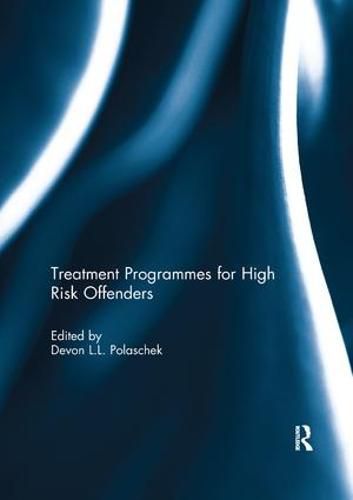Readings Newsletter
Become a Readings Member to make your shopping experience even easier.
Sign in or sign up for free!
You’re not far away from qualifying for FREE standard shipping within Australia
You’ve qualified for FREE standard shipping within Australia
The cart is loading…






High risk offenders can have a disproportionate impact on their communities because, despite all manner of sentencing options, they continue to commit a wide range of crimes, both minor and serious. It is tempting to throw the book at them, sometimes even to throw away the key. However, anything that helps offenders to change their propensity for re-offending can really make a difference.
Over the last 30 years, scientific research has guided the provision of treatment, rehabilitation and reintegration services that lead to reductions in re-offending. Much of what we know, however, comes from work with medium-risk offenders. Although this work is important and valuable, there is a lower level of complexity to working with medium-risk offenders than most high-risk offenders require.
This book recognizes the need to research and develop different approaches to rehabilitating high-risk offenders. Each of the contributions takes a different approach, with a different group of offenders, in a different setting. Cumulatively, the chapters provide encouragement for those working with high risk offenders, along with a wide range of ideas about how to develop better services.
This book was originally published as a special issue of Psychology, Crime & Law.
$9.00 standard shipping within Australia
FREE standard shipping within Australia for orders over $100.00
Express & International shipping calculated at checkout
High risk offenders can have a disproportionate impact on their communities because, despite all manner of sentencing options, they continue to commit a wide range of crimes, both minor and serious. It is tempting to throw the book at them, sometimes even to throw away the key. However, anything that helps offenders to change their propensity for re-offending can really make a difference.
Over the last 30 years, scientific research has guided the provision of treatment, rehabilitation and reintegration services that lead to reductions in re-offending. Much of what we know, however, comes from work with medium-risk offenders. Although this work is important and valuable, there is a lower level of complexity to working with medium-risk offenders than most high-risk offenders require.
This book recognizes the need to research and develop different approaches to rehabilitating high-risk offenders. Each of the contributions takes a different approach, with a different group of offenders, in a different setting. Cumulatively, the chapters provide encouragement for those working with high risk offenders, along with a wide range of ideas about how to develop better services.
This book was originally published as a special issue of Psychology, Crime & Law.